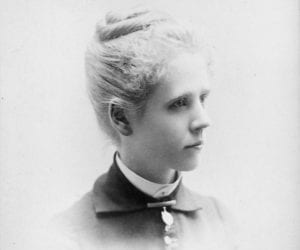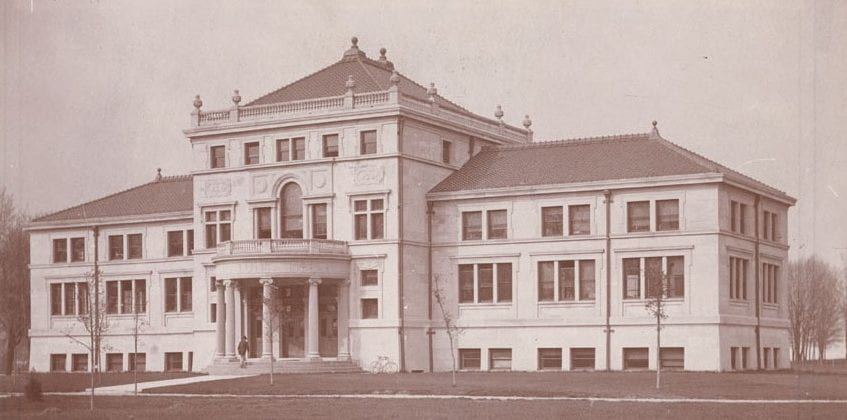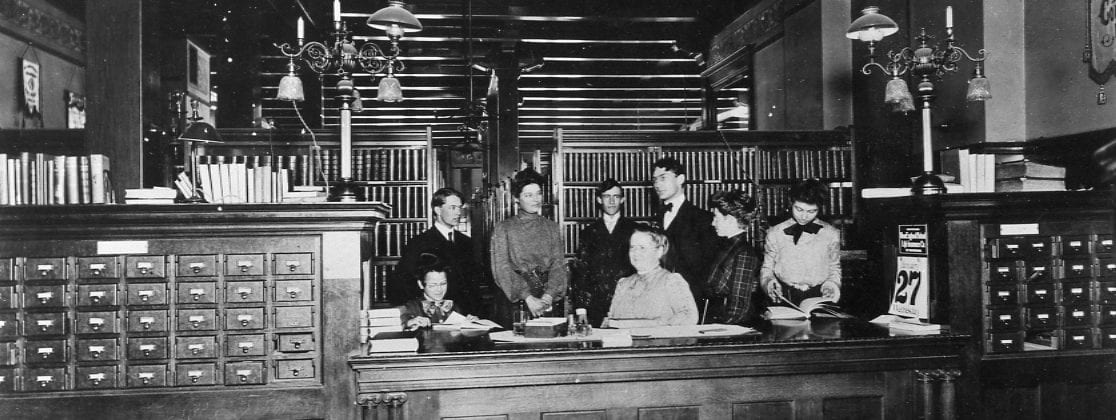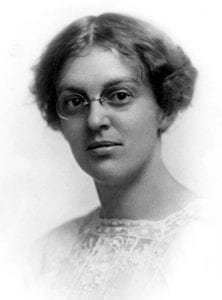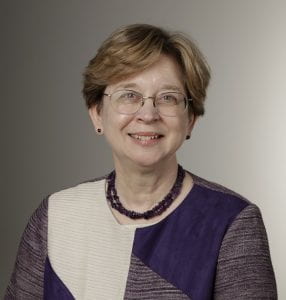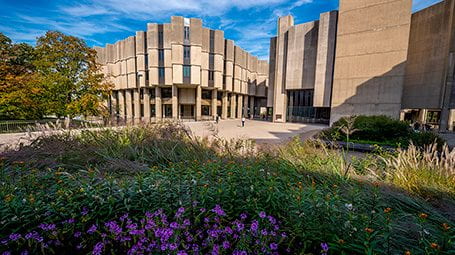“On the Same Terms” is an exhibition and blog series dedicated to this academic year’s commemoration of the 150-year anniversary of the admission of women to Northwestern.
Sarah Pritchard is Northwestern’s first dean of Libraries and the first woman to be appointed the University’s library director in her own right, but she brooks no misunderstanding about who was the first woman to lead the institution. That honor belongs to Lodilla Ambrose, an 1887 Northwestern graduate who ran the library from 1888 to 1908.
“I view her as Northwestern’s first serious library director,” Pritchard said. “She had curatorial, educational, and administrative vision. She was more than a book collector.”
During its 165-year history, Northwestern’s library has been led by 10 librarians. Of those, three have been women: Ambrose at the turn of the 20th century, Pritchard since 2006, and Effie Keith during the second World War. But until Pritchard, true recognition of their authority was limited.
For example, Ambrose served her entire 20-year tenure with the title “assistant librarian,” unlike her male predecessors and successors, who bore the unqualified “librarian” title. Ambrose reported to an all-male faculty oversight committee that made final decisions and approved her purchases.
“It is sadly typical of the era that she was not allowed officially to be in charge,” Pritchard said. “I’m sure that the faculty committee viewed her as sweet and competent but little more than a secretary.”
Though her title could have relegated her to a caretaker role, Ambrose turned out to be an innovator who reshaped the library in a time of great change. In addition to overseeing the library’s 1894 move from University Hall to the more formal Lunt Hall, she completely cataloged the collection and boldly opened it to students, not just faculty.
Ambrose was the first Northwestern librarian to begin purchasing books in anticipation of curriculum needs. She also oversaw the implementation of new technology (typewriters and telephones) and introduced Library of Congress catalog cards and statistical records. An 1896 Chicago Evening Post article titled “Leader among Librarians,” referred to Ambrose as “one of the most widely known of the pioneer women librarians of this country.”
After two decades of service, Ambrose felt she deserved more than her $1,200 annual salary. Perhaps buoyed by the example of the women’s suffrage movement, she requested a raise.
“She had the gumption to complain about her salary,” Pritchard said. And when Northwestern declined Ambrose’s request, “she held to her principles and quit.”
Ambrose’s replacement, Walter Lichtenstein, was given the title “University librarian” and a $2,000 annual salary. Ambrose went on to become a librarian and curator at Tulane University’s school of tropical medicine.
Effie Keith served as interim librarian from 1941 to 1944, immediately after the death of Theodore Koch, the University librarian who championed the construction of Deering Library. One of Keith’s colleagues, on hearing of her appointment, remarked, “Fine, I am glad to know that those men have recognized Miss Keith’s ability. She is entirely competent to run the library.”
In her previous role as an assistant librarian, Keith had primarily been responsible for staffing and personnel issues. These skills stood her in good stead during her tenure as acting librarian, as the World War led to shortages in staff and materials. Her correspondence reveals her conscientious attention to the daily needs of the Library, from problems with vacation hours to supervising the branch libraries (Botany was particularly demanding) and preparing a disaster plan in case of air raids. She also oversaw faculty member Melville Herskovits’s purchase of the personal library of anthropologist Franz Boas, marking the birth of today’s renowned Africana collection.
Despite her ability and willingness to take on the administrative responsibilities of a head librarian, however, there is no indication that she sought the role for herself—or that she was ever considered for it by the administration.
Keith resumed her position as assistant librarian after Jens Nyholm was appointed the new head librarian in 1944, and retained it until she retired in 1947. However, she continued at the library as a “special consultant in cataloging” until 1949.
Today, Pritchard enjoys different circumstances as the first woman to serve as Charles Deering McCormick University Librarian — and as the first University Librarian to receive the title of dean. In addition to administering University, Deering, Seeley G. Mudd, and Schaffner Libraries, she also has oversight of the Northwestern University Press and the Oak Grove Library Center in Waukegan. She also manages shared services with the Pritzker Legal Research Center, Galter Health Science Library and NU-Q Library in Qatar. Her prior positions include University Librarian at the University of California, Santa Barbara; Director of Libraries at Smith College; associate executive director at the Association of Research Libraries; and several positions in reference and collection development at the Library of Congress, including LC’s first subject specialist in women’s studies.
CODA
“If the University community be one great family, then is the library its great living room, the center of its home life; and there each from gravest dean to friskiest freshman finds good cheer and helpfulness suited to need.”–Lodilla Ambrose, in Northwestern University: A History, 1855-1905
All historical images and information come from the University Archives collections.
Fall 2019 marked 150 years since women could enroll as Northwestern undergraduate students. Visit the 150 Years of Women website to learn more about how the University has marked this historic event.

